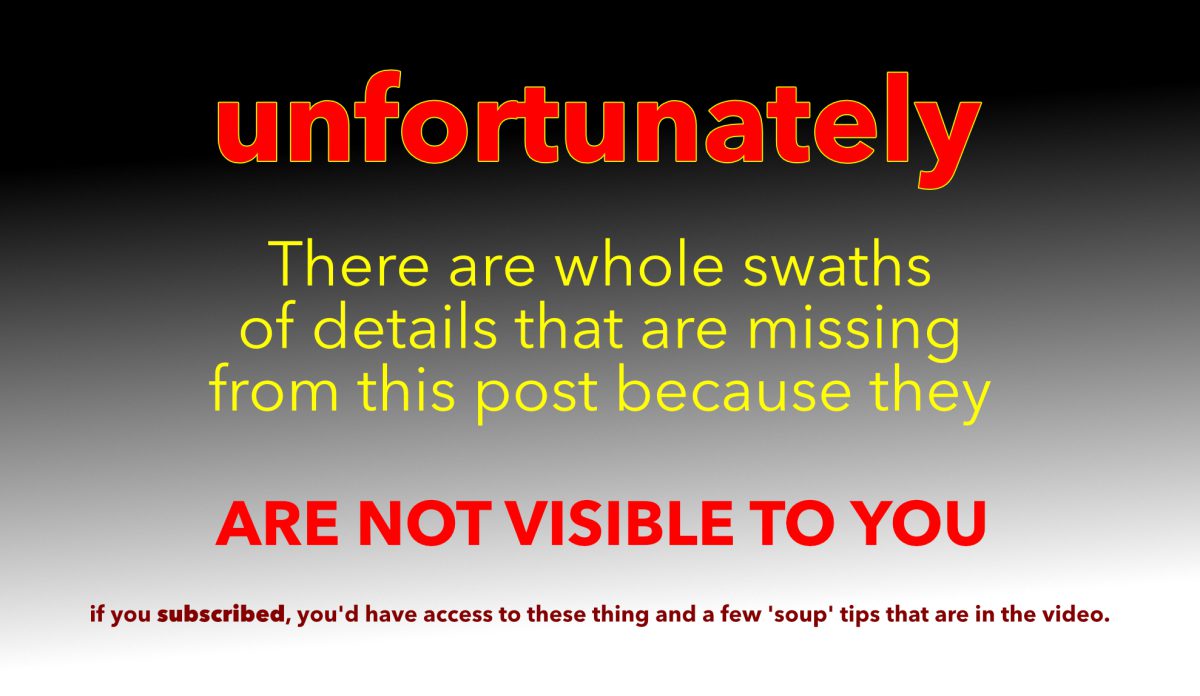There are 8 types of Ochos, but only 2 of them are used routinely to lead into other things. The 2 types ? “Lazy” or Milonguero Style Ochos, and Traveling Ochos, what you folks think of as an ‘Ocho’. Traveling Ochos ? You know the one where you’re supposed to lead Disassociation and you frequently don’t especially on the closed side of the embrace (tsk, tsk, tsk), and where the Follower infers that led Disassociation and fills in the gap and starts Applying Disassociation all over (what you erroneously think of as a ‘pivot’) ? That ocho ? Yes. Frequently these two types of ochos are used as transitions into other pieces of tango vocabulary without a stop or a pause. There is a natural flow in a good number of these transitions and one of them is from the Lazy Ocho into the Milonguero Turn. They align themselves rather nicely. However with the alignment of these things, and the frequency with which you see these things, you would think that there would be more classes on this stuff. But sadly there isn’t. A good portion of the time, you’re taught the under lining vocabulary technique and then shown for 2 minutes near the end of the class where this stuff could (operative word in the sentence, ‘could’) fit. It is for this reason that this topic and the resulting video exists: Ocho Transitions – Milonguero Ochos into Milonguero Turns!
What is an Ocho Transition ? It is exactly what it sounds like. It’s a transition between a commonly used type of Ocho into another commonly used piece of vocabulary. There are 4 types of Ocho Transitions that rely on 2 of the more common types of Ochos. Milonguero Ochos, which are sometimes referred to as “Lazy” Ochos because the hips of the Follower do not rotate. This type of Ocho is absolutely perfect for dancing in a small space, and requires very little effort to lead and very little effort to follow, hence the reason why they’re called “Lazy” Ochos. The second commonly used type of Ocho is the one that everyone is familiar with, these are called “Traveling Ochos” because they do exactly what they say they do, they “Travel” down the line of dance! A Lead will typically engage one or sometimes both of these types of Ochos as a way to transition into another type of vocabulary, usually as a way to lead upto one of the Eight types of turns that are used in Argentine Tango.
What is a Milonguero Ocho to Milonguero Turn ? It’s quite possibly the single most used transition the Tango world, for those that are Dancing In A Small Space (DIASS). This transition employs the Follower’s natural diagonal backstep (which is the Lazy Ocho part) and uses that as the opening step for the Milonguero Turn to be engaged!
Free Tip – Learning to lead and follow a Milonguero Ocho will open up doors for you in terms of nuance and clarity that you never even imagined. The reality is that the Milonguero Ocho is quite possibly the mic drop that you’ve been looking for in your dance but didn’t realize it because it looks sooo dead simple. And yet it is that dead simple stuff that can change your dance! This is that toy!
Pre-Requisites: So that we’re all clear on this part, note the difficulty rating below, it is not an exaggeration! You would think this is just walking and turning. That would be a mistake. 1.) You must have mastered your walk first and foremost to the point where you are not using your partner (either lead or follow) for stabilization. 2.) You must be familiar with the Milonguero Ocho from a Leading perspective as well as from a Following perspective. 3.) You also must have mastered the Milonguero Turn from both sides of the embrace. While this transition is a natural extension of both ideas put together it’s important that you have them both clearly in your mind before you attempt to put them together. The reason this video exists is to clean up the issues of the transition itself so that you don’t run into the common problems that most people do when they put these things together.

About The Video. This video is 22:40 in length in 4 Sections. Both Lead and Follow technique is co-combined.
Section 1 – Reminder Technique (Milonguero Ochos & Milonguero Turns) – 00:07:02
Section 2 – The Transition Point – 00:07:17
Section 3 – Review – 00:01:13
Section 4 – An Important Detail/End – 00:03:34

